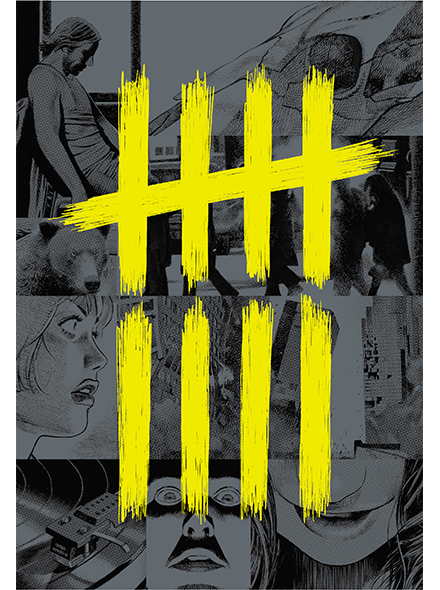In 1985, Taiwanese comic artist Push released his highly original sci-fi comic book Nine Lives Man. The comic inspired a generation of readers as they followed the adventures of Guy Ninemann, a man who unwittingly receives nine lives, as he travels between Heaven, Hell, and the mortal realm. One of those young fans was Chang Sheng. In 2018, Chang Sheng, now a comic book artist in his own right, enlisted Push and three other artists to create new interpretations of the classic. With no restrictions on genre or style, the artists agreed only to follow the core concept of “a man with nine lives”.

Calling All Artists: A New Edition of Nine Lives Man
According to Chang Sheng, a comic book becomes a classic because it has some element which transcends the era in which it was created. In the case of Nine Lives Man, the core concept of a man having nine lives always intrigued Chang Sheng, but, as a comic creator he felt frustrated that he couldn’t run with an idea that was not his own. That frustration remained until five years ago, when, through a twist of fate, he had the opportunity to ask the original creator Push if he could draw his own version of Nine Lives Man. He never imagined Push would agree right on the spot, initiating a unique creative project never before seen in the history of Taiwanese comic books.
Drawing inspiration from the prominence of the number nine in the original comic, Chang Sheng wanted to invite nine different comic book creators to participate in the publication of a nine issue series to be released on September 9th, and later release a compendium of the series in 2019. He even hoped to curate an exhibition about the project, among other ambitious ideas. After pitching the concept to publishers and artists across the industry, he was able to recruit only five artists, including himself and the original creator, Push. Although the scale of the project fell short of the original conception, the five artists set to work based on the core concept of “a man with nine lives”. Their creations span the gamut of styles from sci-fi to fantasy to thriller to romance, and even include a sequel that picks up thirty years after the timeline of the original. Taken together, the multiple versions of Nine Lives Man constitute a sumptuous visual feast.
Chang Sheng relates a number of curious episodes from the process of creating the series. The group first began their discussions at a coffee shop called R9. The number nine appeared again on Chang Sheng’s bus ride after the meeting. After deciding to dedicate himself to the project, he began to pay more attention to where the number nine appeared in his life, taking it as a lucky number. Only then did he discover that traces of the number nine ran everywhere in his life.
From Nine Lives Man to Time’s Wheel
Following the plan of the original, Chang Sheng’s Nine Lives Man: Time’s Wheel, tells the story of Guy Ninemann, a man with nine lives, who incarnates as various people (and life forms) to avert a city-wide bomb attack. In the various bodies of a police detective, a prisoner on death row, a writer, a little girl, a grandmother, a robot, and even a bear, he returns again and again to the scene of the incident to see if he can prevent the catastrophic loss of life and untold suffering that unfolds. The story subverts linear time, as well as traditional notions of reincarnation, as the successive lives of the protagonist overlap and interact with one another, each altering the course of events leading to the incident. The bewildering timeline is paired with Chang Sheng’s admirably meticulous artwork to produce an utterly unique reading experience which inspires readers to ponder the very nature of life itself.
Faced with this complex narrative challenge, Chang Sheng prepared himself by plotting the relationships between the characters and events in the story, creating the conceptual map that now serves as epilogue to the comic book. Chang Sheng has always had the habit of first drafting a blueprint of his stories before beginning to draw. Doing so allows him to plan out the foreshadowing, big reveals, and pace of the story. In addition, it allows him to draw the comic sequentially, so he can ensure steady progress. Chang Sheng strives to create stories that conform to the classical dramatic structure of exposition, complication, reversal, and dénouement, both in the broad outlines of the narrative, and in the arrangement of panels and transitions between pages in the comic book format. His goal is to keep his readers hooked, and keep them turning pages.